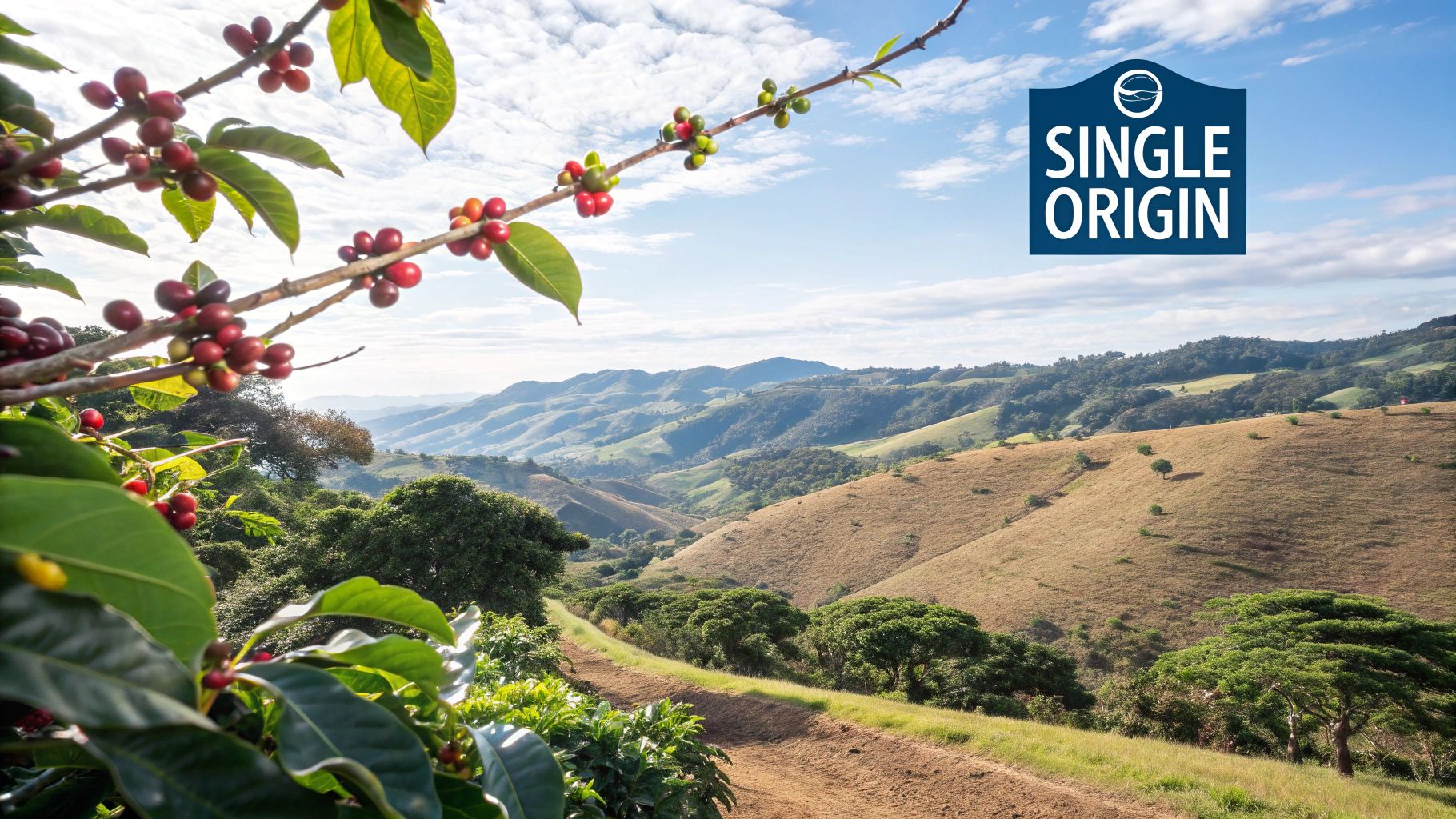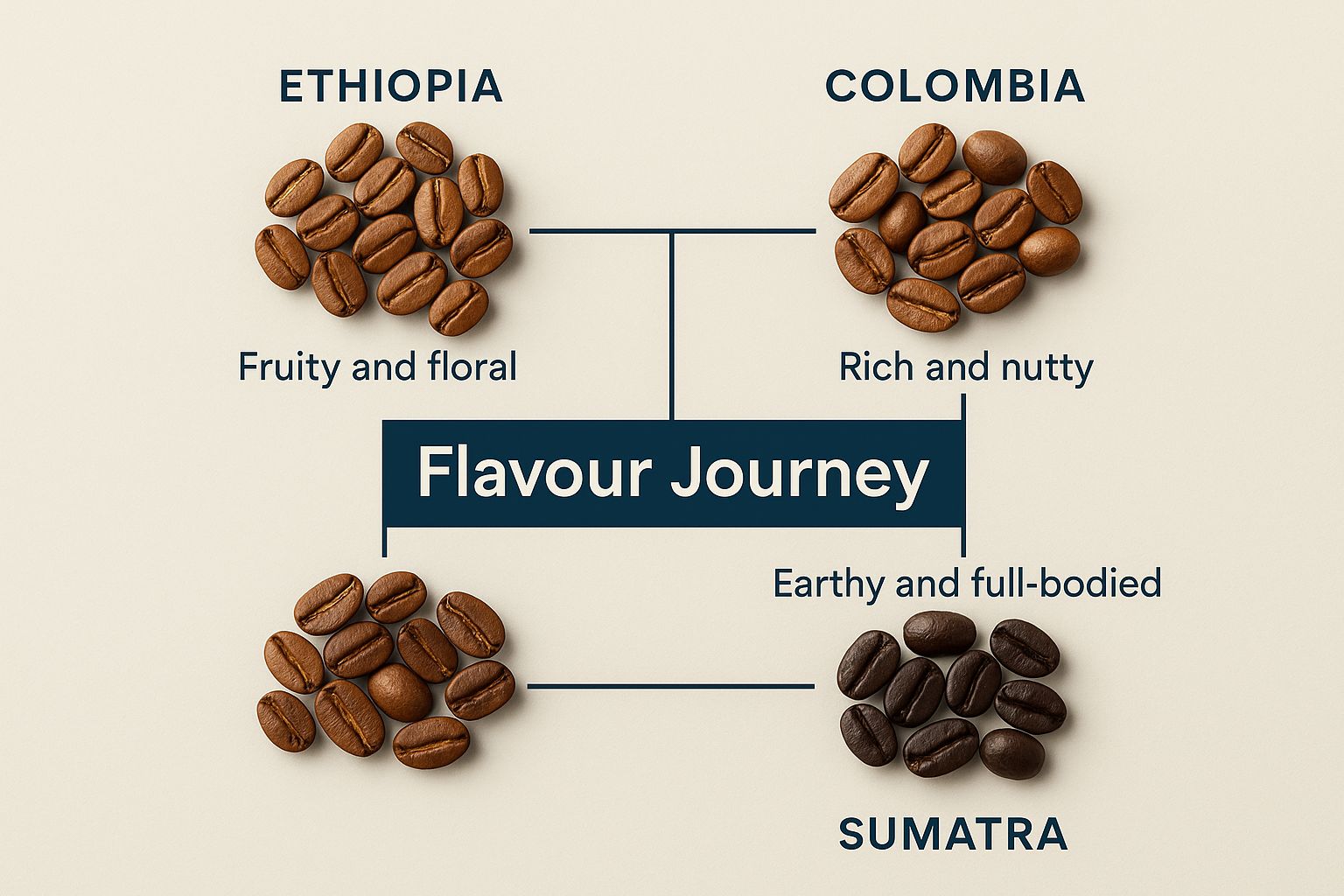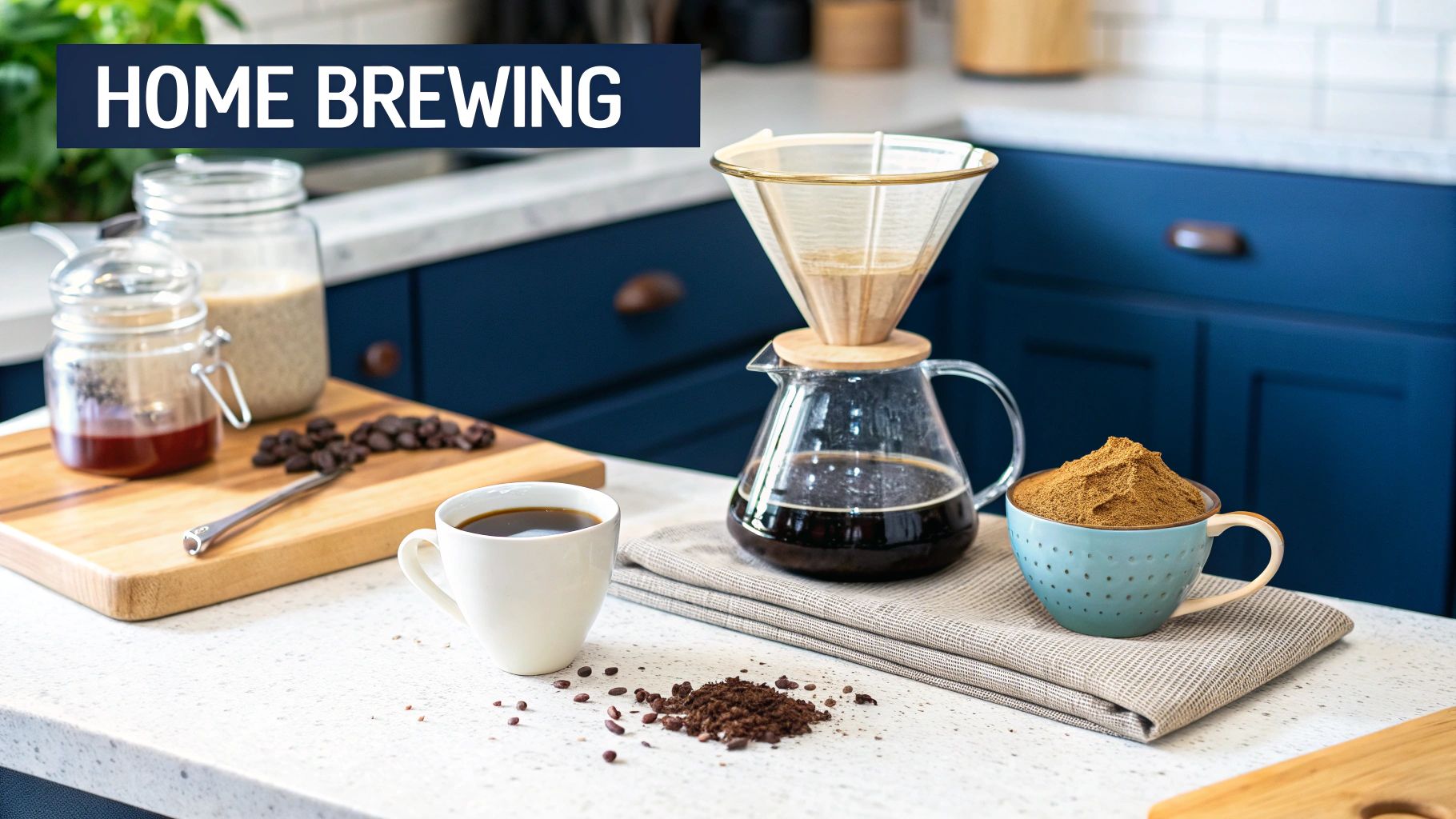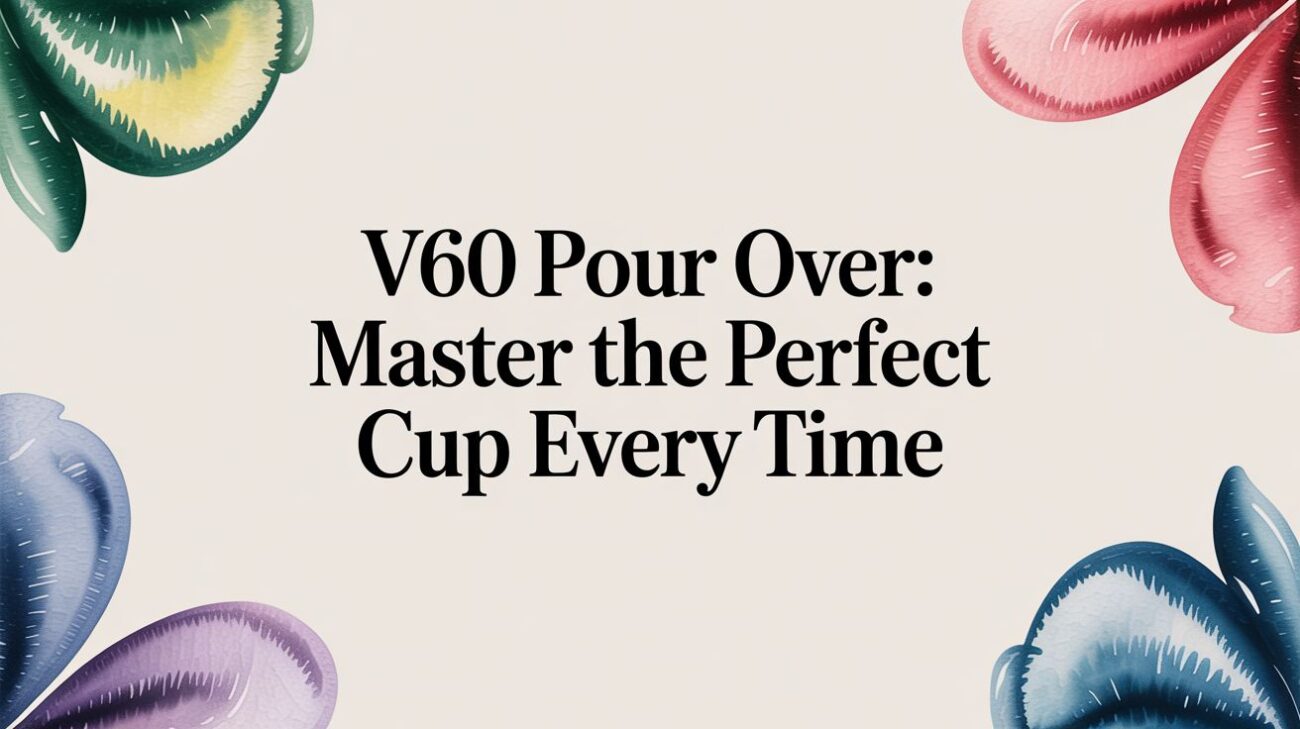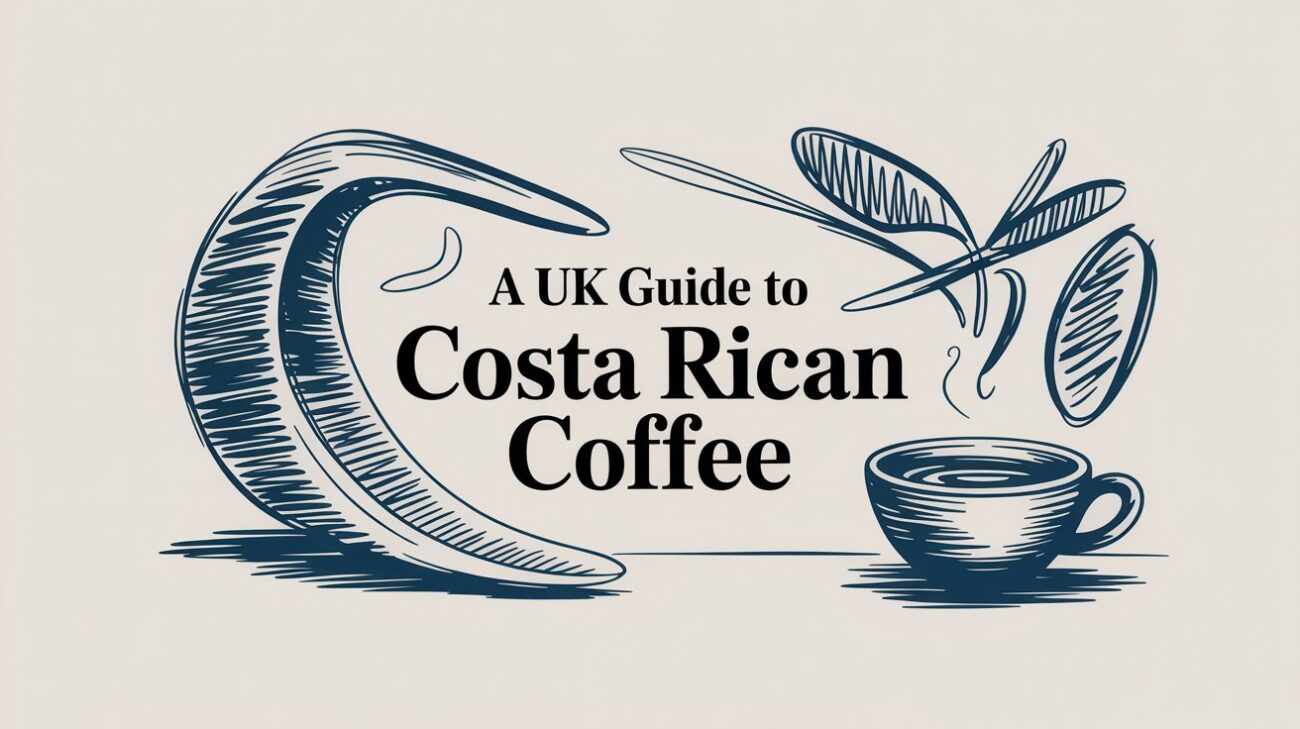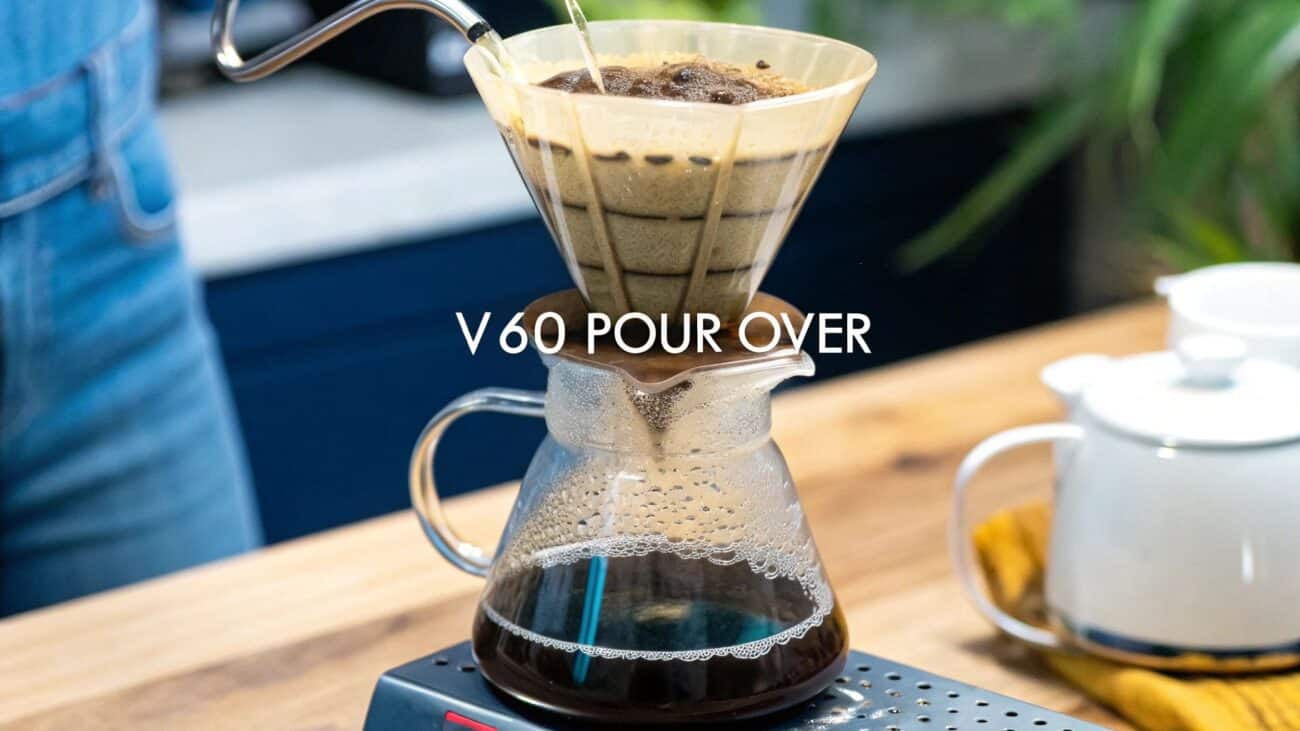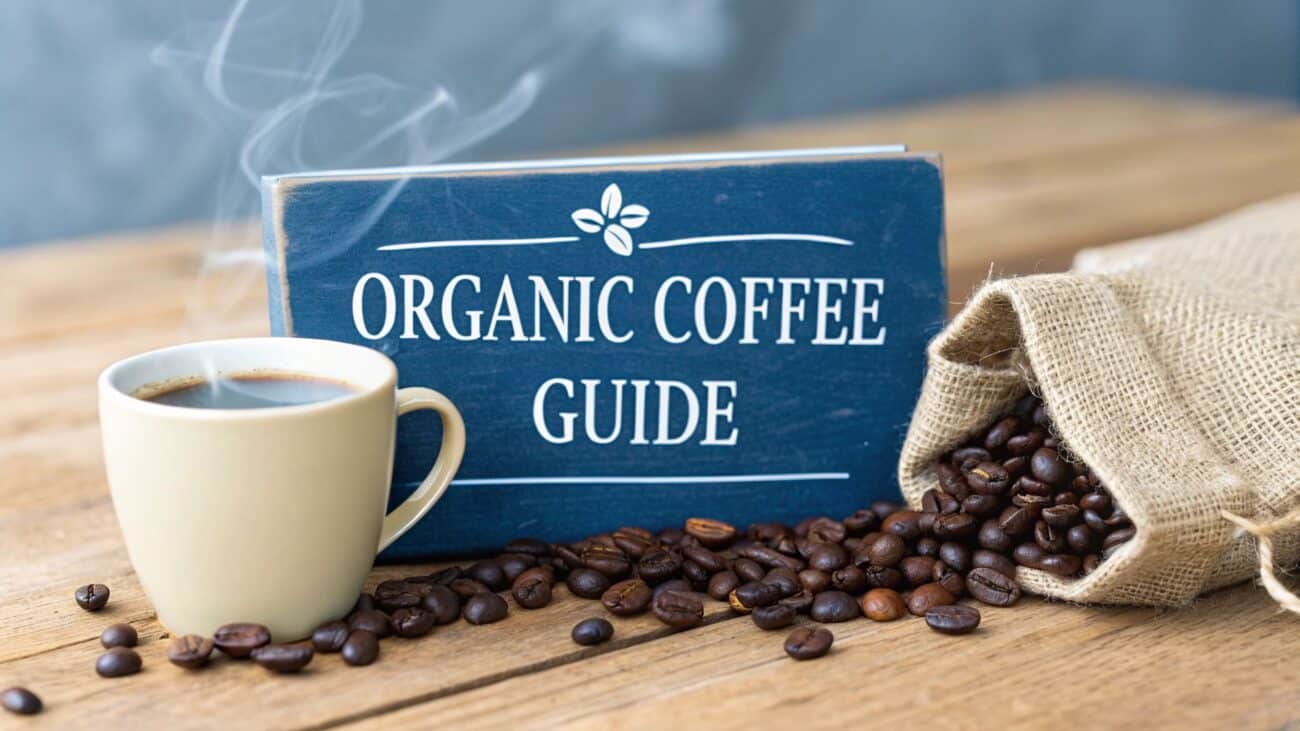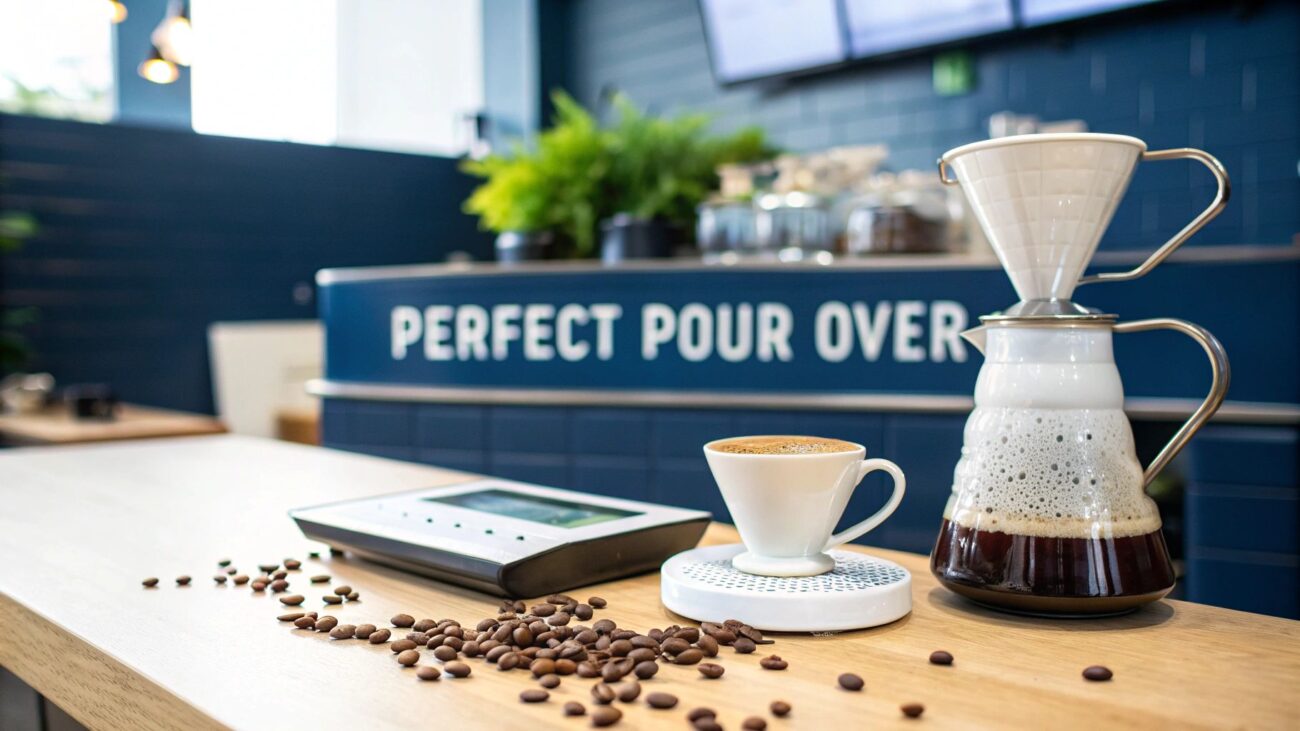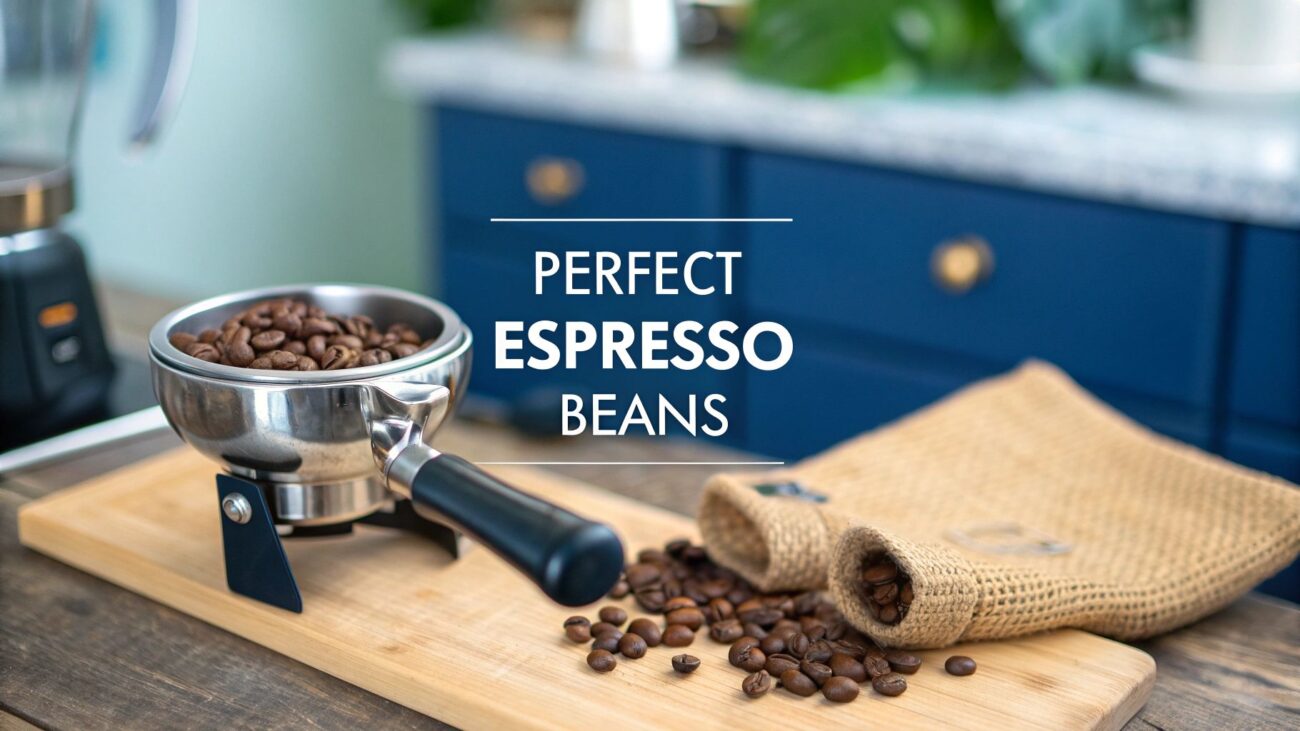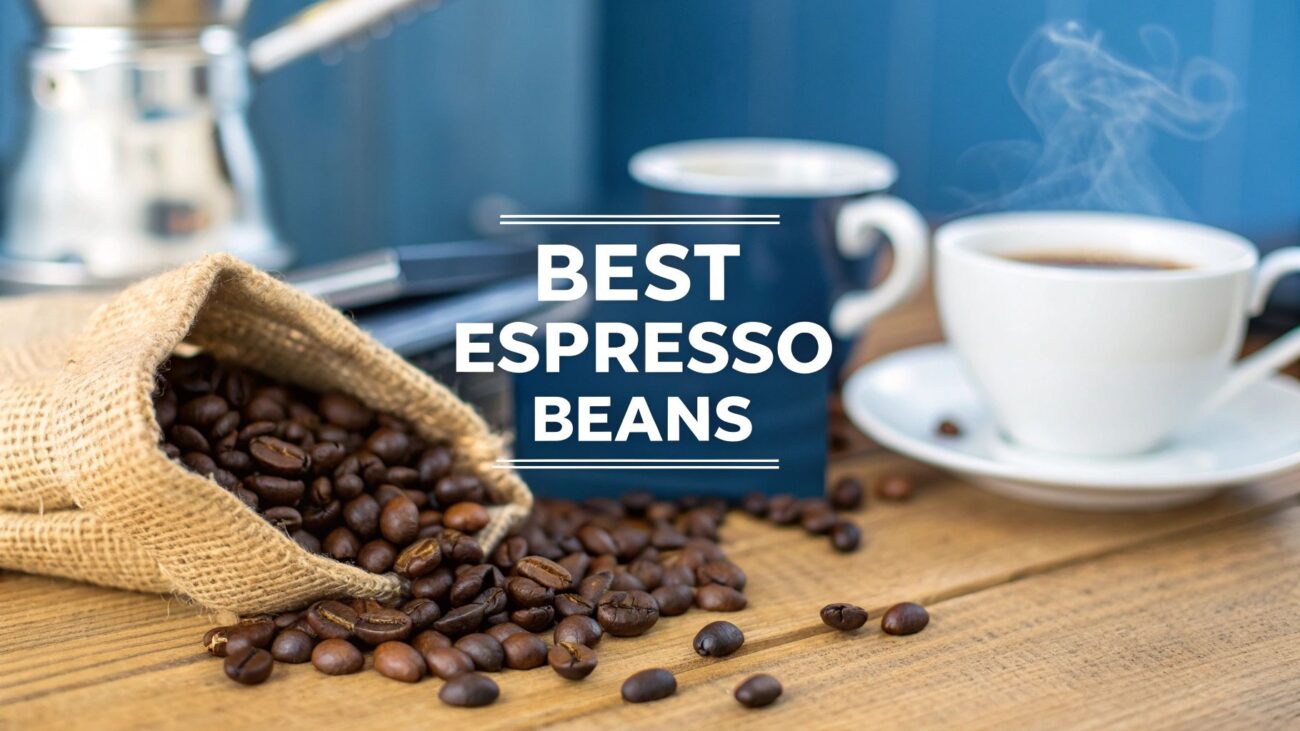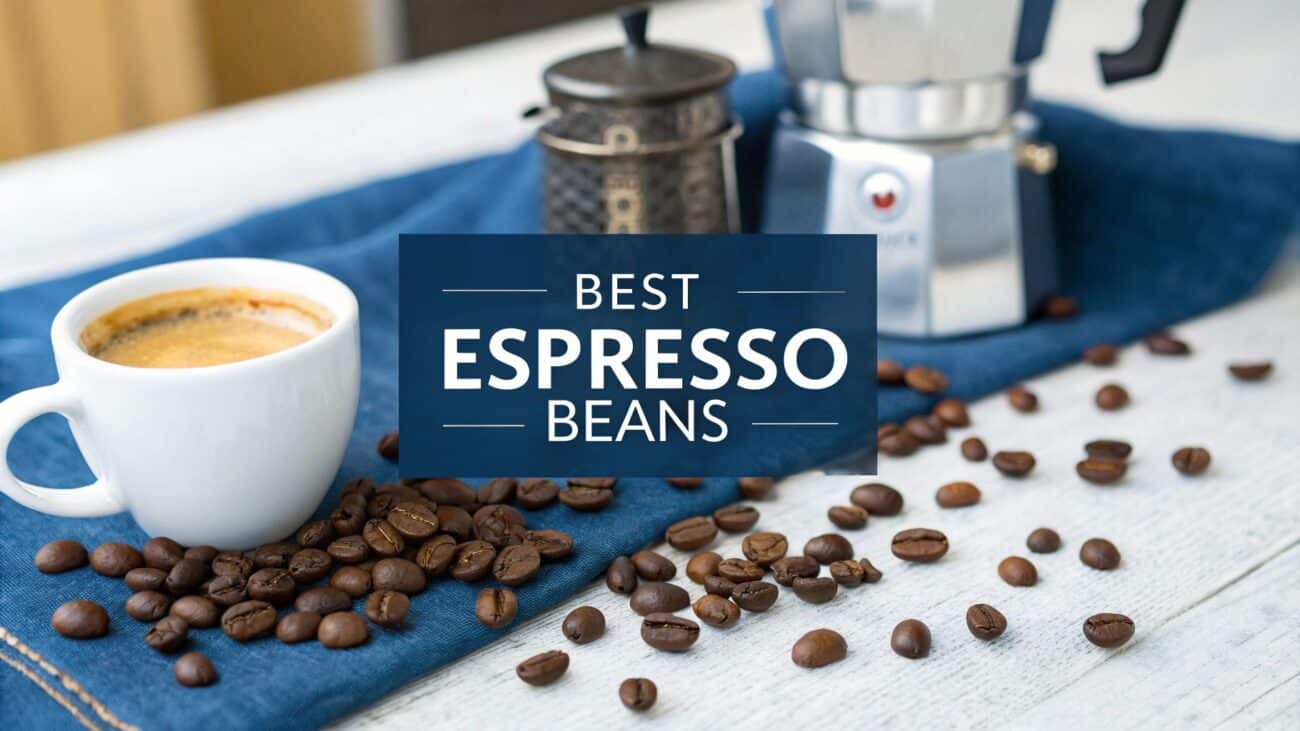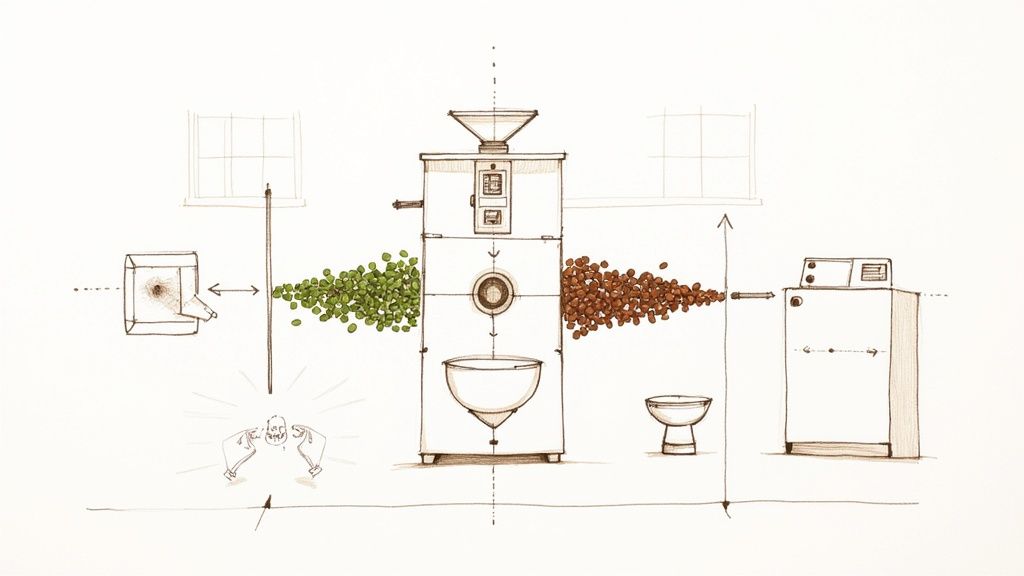A Guide to Single Origin Coffee Beans
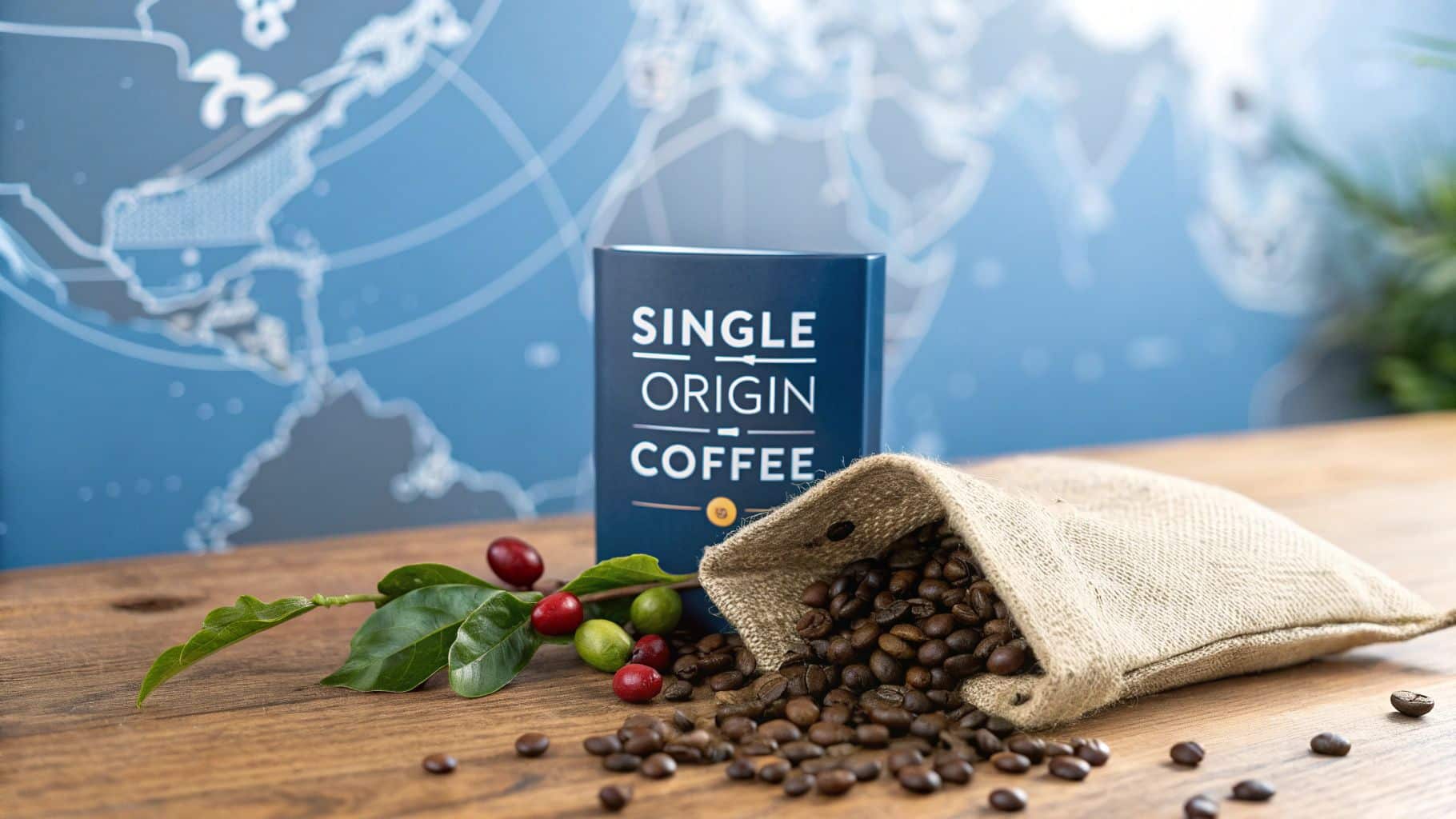
Single origin coffee offers a pure, unblended taste that comes from one specific farm or region. It’s all about capturing the unique character of its environment, which means a coffee from Ethiopia will taste remarkably different from one grown in Colombia. This traceability is what makes each bag its own distinct tasting experience.
What Makes Single Origin Coffee Special?
Think about tasting a fine wine. You might pick up on notes that tell you about a particular vineyard—the soil, how much rain fell that year, and the sunny slopes where the grapes grew. This idea, known as terroir, is the perfect way to understand single origin coffee beans.
Just like wine, coffee is a fruit, and its final flavour is a direct reflection of its home. A single origin coffee is one that hasn’t been mixed with beans from any other location, allowing the unique characteristics of that one place to shine through in your cup.
A Story in Every Sip
When you brew a single origin, you're not just making a drink; you're tasting a story. The high altitudes of the Andes might produce a bean with bright, citrusy acidity. Meanwhile, the volcanic soil of Sumatra could yield a coffee that’s deep, earthy, and full-bodied. These are flavours that simply can't be created by mixing beans from different places.
Coffee blends, on the other hand, are created for consistency. Roasters carefully combine beans from various origins to engineer a balanced, reliable flavour profile that tastes the same all year round. They're designed to smooth out the unique—and sometimes intense—characteristics of individual beans.
Single origin coffee is all about celebrating uniqueness. It’s for the curious drinker who wants to explore a whole spectrum of flavours and understand how a coffee’s journey from a specific farm shapes the final taste.
Key Differences at a Glance
So, what really sets these coffees apart? It all boils down to a few core principles:
- Traceability: You know exactly where your coffee comes from, often down to the specific cooperative or even the individual farm.
- Unique Flavour: The taste is a pure expression of its origin, full of distinct and often complex tasting notes you won't find anywhere else.
- Seasonality: These coffees are often available for a limited time, reflecting the natural harvest cycle of their home region.
This laser focus on a singular source is why coffee lovers get so excited about single origin coffee beans. They offer a tasting experience that is both authentic and adventurous, taking you on a journey with every brew. Of course, the way these beans are roasted also plays a huge part, and you can learn more about how different coffee roasting profiles explained can highlight their distinct qualities.
The Rise of Single Origin Coffee in the UK
The British love affair with coffee has changed, and it’s happened faster than you might think. Not so long ago, most kitchen cupboards were home to a trusty jar of instant coffee, with a proper brewed pot saved for special occasions. Today, that picture is almost unrecognisable.
This isn’t just about drinking more coffee; it’s about drinking better coffee. We’ve moved beyond generic blends and started asking where our beans come from. The demand is no longer just for a caffeine hit, but for a genuine flavour experience—one that tells the story of its home. This is where single origin coffee has stepped into the spotlight.
From Commodity to Craft
This shift mirrors what we’ve seen with other everyday staples, from craft beer to artisanal bread. People are genuinely interested in provenance, quality, and the story behind what they consume. When it comes to coffee, this means wanting to know the country, the region, and sometimes even the specific farm that grew the beans.
This desire for transparency has fuelled the growth of independent roasters and speciality cafés all over the UK. They’ve become educators, introducing us to the vibrant, distinct flavours that single origin coffee beans can offer. The conversation has moved on from "strong or weak" to discussions about tasting notes of blueberry, jasmine, or chocolate.
The UK's coffee consumption has surged, reflecting a powerful trend towards premium and speciality options. This growing demand highlights a national palate that is increasingly sophisticated and eager to explore authentic, high-quality brews.
The numbers back this up. UK coffee drinkers now get through approximately 98 million cups of coffee per day, a huge jump from around 70 million cups daily back in 2008. What’s more, while the UK coffee market was projected to hit £7 billion by 2030, the booming premium segment—which includes single origin—is expected to push this value up to a remarkable £9.2 billion.
A New Standard in Brewing
This movement isn't just happening in cafés; it's transforming our kitchens too. More of us are investing in good equipment, from grinders to pour-over kits, eager to unlock the complex flavours promised on the bag. Home brewing has turned a simple morning routine into a rewarding ritual.
This growing appreciation has made single origin a hallmark of quality. When you explore the world of specialty coffee beans, you're joining a culture that values authenticity and flavour above all else. It’s a clear signal that for many in the UK, coffee is no longer just a commodity but a craft to be celebrated.
A Flavour Journey Through Key Coffee Regions
Much like a wine’s character is shaped by its vineyard, the taste of a single origin coffee bean is a direct reflection of its home. The unique blend of soil, altitude, and climate—what the French call terroir—crafts a flavour profile so distinct it’s like a postcard from that corner of the world. Exploring these differences is one of the greatest joys of speciality coffee.
To help you get your bearings on this sensory map, this visual guide connects the dots between origin and flavour.
As you can see, beans from different parts of the globe offer remarkably different tasting experiences, from bright and floral to deep and earthy.
Africa: The Birthplace of Coffee
Often called the cradle of coffee, African countries are famous for producing beans with vibrant and complex personalities. The flavours here are typically bright, aromatic, and wonderfully intricate. It's a region that never fails to surprise.
- Ethiopia: As the legendary home of Arabica, Ethiopia offers a dazzling spectrum of flavours. Beans from the Yirgacheffe region are famously floral and almost tea-like, with delicate notes of bergamot and jasmine. Head over to Harrar, and things get wilder, with jammy blueberry and distinct wine-like notes.
- Kenya: Kenyan coffee is celebrated for its powerful, punchy acidity and full body. You can expect a bold, wine-like brightness, often with unmistakable notes of blackcurrant, tomato, or grapefruit. It's a truly memorable cup.
Latin America: Balanced and Approachable
Coffees from Central and South America are often what people imagine when they think of a classic, satisfying cup. They're renowned for their beautiful balance, smoothness, and familiar, comforting flavours like chocolate, nuts, and caramel.
This region is a fantastic starting point for anyone new to the single origin scene because of its welcoming profiles. If you fancy exploring this part of the coffee world, you can discover a great range of single origin coffee beans from Latin America and beyond.
Latin American coffees are a cornerstone of the speciality world. They offer a perfect harmony of sweetness, acidity, and body that makes them incredibly versatile and consistently delicious.
Asia Pacific: Bold and Earthy
The coffees from countries in and around the Pacific Rim are known for their deep, bold, and often unconventional character. These beans tend to have a full, syrupy body and low acidity, which creates a rich and lingering taste experience.
- Indonesia (Sumatra): Sumatran beans are famous for their heavy, full-bodied profile and low acidity. The unique "Giling Basah" (wet-hulling) process gives them distinctive earthy, spicy, and sometimes even tobacco-like tasting notes.
- Papua New Guinea: Though it's just next door to Indonesia, these coffees can be quite different. They often present a cleaner, sweeter profile with herbal notes and a more moderate acidity, creating a fascinating contrast.
Getting a handle on these regional tendencies is your key to confidently navigating the world of single origin coffee beans. It turns shopping for coffee from a random guess into an exciting choice, empowering you to pick a bag that you know you'll love.
To make things even clearer, here’s a quick-reference table that breaks down what you can typically expect from each major coffee-growing region.
Single Origin Flavour Profiles by Region
| Region | Common Flavour Notes | Acidity Level | Body |
|---|---|---|---|
| Africa | Floral, Fruity (Berry, Citrus), Wine-like | High, Bright | Light to Medium |
| Latin America | Chocolate, Nuts, Caramel, Mild Fruit | Medium, Balanced | Medium |
| Asia Pacific | Earthy, Spicy, Herbal, Woody, Tobacco | Low | Heavy, Syrupy |
This table is a great starting point, but remember that the world of coffee is full of wonderful exceptions. The best way to learn is to taste for yourself and discover which origins speak to you. Happy brewing
Why Traceability and Ethics Really Matter
Beyond the incredible flavour, choosing single origin coffee beans is about making a more conscious, transparent choice for your daily brew. It’s a way of understanding the journey from a distant farm right into your cup—a connection that’s all too often lost in the anonymous world of commodity coffee.
This traceability is the very heart of a more ethical coffee industry. When you can trace your coffee back to a specific farm or cooperative, it opens the door for direct trade relationships. That simple connection helps ensure farmers receive a fairer, more sustainable price for their incredible hard work and dedication.
From Bean to Your Cup: A Transparent Journey
Think of it like buying vegetables from a named local farm versus grabbing them from a generic supermarket aisle. With single origin, the story is part of the product. This level of transparency demands accountability, encouraging higher standards in both farming practices and worker welfare.
This direct line of sight also empowers you as a coffee drinker. You know exactly where your money is going—supporting real people and their communities, not just disappearing into a tangled and complex supply chain. It’s a powerful ripple effect that starts with the beans you choose.
When you choose single origin coffee, you're not just buying a product; you're investing in a more equitable and sustainable model for the entire coffee industry. This choice helps ensure that the people who grow our coffee can thrive.
The economic impact here is huge. In the UK, the coffee sector contributes over £9.1 billion in Gross Value Added (GVA) to the economy and supports more than 210,000 jobs. As more people demand to know where their coffee comes from—especially millennials, who now make up 16% of UK coffee buyers—single origin is becoming a vital part of this market.
Supporting Communities and Sustainable Farming
The benefits of this ethical approach stretch far beyond just fair pricing. When you support single origin, you're often backing sustainable agriculture. Many of these small-scale farmers use environmentally friendly methods that preserve biodiversity and protect fragile local ecosystems. For those keen to dig deeper, understanding organic certifications can offer even more insight into these practices.
What’s more, the premium paid for these high-quality beans is frequently reinvested straight back into the farming communities. This can fund vital infrastructure like schools, healthcare facilities, and clean water projects, creating positive, lasting change for generations to come.
This ethical framework gives every cup a deeper meaning. For example, a delightful Brazilian single origin like Noz Suave offers notes of chocolate and nuts, and knowing its story adds another layer of appreciation to the experience. By choosing traceable coffee, you become a partner in a global movement towards a fairer, more sustainable future—one delicious cup at a time.
How to Brew Single Origin Coffee at Home
You’ve brought home a beautiful bag of single origin coffee beans, and now the real fun begins: unlocking all those incredible flavours locked inside. The right brewing method can make all the difference, acting like a spotlight that illuminates the unique character of your chosen beans.
Think of it like a chef selecting the perfect cooking technique. A delicate Ethiopian Yirgacheffe, with its floral and tea-like notes, will absolutely sing when prepared with a method that favours clarity and brightness.
On the other hand, a rich, earthy Sumatran bean needs a method that can celebrate its full body and deep, syrupy sweetness. Your kitchen is now a café, and you are the head barista.
Matching Your Beans to Your Brewer
The first step is understanding how different brewing methods interact with the coffee. Some fully immerse the grounds in water, while others use a slow, steady percolation. Each approach pulls out flavours differently, shaping the final taste in your cup.
For a detailed walkthrough of various techniques, you can explore our full guide on how to brew coffee, but here's a quick overview to get you started.
- Pour-Over (e.g., V60, Chemex): This method is perfect for showing off delicate and complex flavours. The paper filter creates an incredibly clean cup, allowing the bright acidity and nuanced floral or fruity notes of light-roast African coffees to shine.
- French Press (Cafetière): As an immersion method, the French press produces a full-bodied, rich, and textured coffee. It’s ideal for beans with deep chocolatey or nutty profiles, like those from Brazil or Indonesia, because it keeps the natural oils that paper filters remove.
- AeroPress: This versatile brewer is a firm favourite among coffee enthusiasts for a reason. It combines immersion and pressure to produce a smooth, clean cup with low acidity. It's incredibly forgiving and works brilliantly with a wide range of single origin coffee beans.
Getting the Fundamentals Right
No matter which brewer you choose, a few key variables will always be crucial for a delicious result. Paying attention to these details will elevate your home coffee from good to truly exceptional.
Think of grind size, water temperature, and brew time as your three main controls. A small adjustment to any one of these can dramatically change the flavour profile, helping you dial in the perfect cup for your specific beans.
Getting these elements right is a rewarding process of discovery.
- Grind Size: This is arguably the most important factor of all. A coarse grind (like sea salt) is best for a French press, while a medium-fine grind (like table salt) suits pour-over methods. Grinding your beans just before you brew preserves their volatile aromatic compounds, delivering maximum flavour.
- Water Temperature: The sweet spot is just off the boil, typically between 90-96°C. Water that's too hot can scorch the grounds and make the coffee taste bitter. Too cool, and you'll end up with a weak, under-extracted brew.
- Brew Time: The total contact time between water and coffee is key. For a French press, you might be looking at around four minutes. For a pour-over, you’re aiming for a total brew time of about two to three minutes.
Experimentation is your best friend here. Don't be afraid to tweak these variables slightly to see how they impact the taste. This hands-on approach is the best way to really understand your coffee and brew a cup that honours its unique origin story.
Your Questions About Single Origin Coffee Answered
As you venture deeper into the world of single origin coffee beans, it's only natural for a few questions to surface. Think of this as a quick chat to clear up some of the common queries we hear, helping you feel even more confident as you explore.
We'll get straight into the classic 'single origin vs blend' debate and then cover some practical advice on everything from cost to keeping your beans fresh, building on what you've already learned.
Are Single Origin Coffee Beans Better Than Blends?
Honestly, neither is 'better'—they just offer completely different experiences for different tastes. A single origin coffee is all about showcasing the unique, distinct flavour profile from one specific place. It’s a lot like a fine wine from a single vineyard.
If you’re an adventurous coffee drinker who loves exploring pure, unadulterated character, single origin is for you. You get to journey through a huge spectrum of tastes that shift and change with every new bean you try.
Blends, on the other hand, are the result of a roaster's artistry. They combine beans from various origins to create a flavour that’s consistent, balanced, and wonderfully reliable. A blend is perfect if you know exactly what you like and want that same satisfying cup, day in and day out. It really just comes down to what you enjoy most.
Why Are Single Origin Coffees Often More Expensive?
That higher price tag is a direct reflection of a serious commitment to quality, traceability, and ethical sourcing. These beans often come from smaller, family-run farms that use incredibly meticulous and labour-intensive methods, like hand-picking only the perfectly ripe coffee cherries.
On top of that, the direct trade relationships common with single origins ensure farmers get a fairer, higher price for their crop than they would on the commodity market. This premium doesn’t just reward their hard work; it encourages sustainable farming for the future.
The cost of single origin coffee is a direct investment in superior quality, ethical sourcing, and exclusivity. Unlike large-scale blends, these coffees are often seasonal, small-batch products from a single harvest, making them rarer by nature.
How Should I Store My Single Origin Coffee Beans?
To protect those delicate and unique flavours, proper storage is absolutely essential. The golden rule is simple: keep your single origin coffee beans in an airtight, opaque container at a stable room temperature.
Your biggest enemies are oxygen, direct sunlight, heat, and moisture. A cool, dark cupboard is the perfect home for your beans. And despite what you might have heard, avoid the fridge or freezer at all costs. Condensation can easily form, which will ruin the precious oils that carry all that wonderful flavour and aroma.
For the best possible taste, always buy whole beans and grind them just moments before you brew. Coffee hits its flavour peak within two to three weeks of its roast date, so buying smaller bags more often is the way to go. As you explore the world of coffee, you might also be curious about other beverages. For an interesting perspective on the reasons some individuals consider alternatives to coffee consumption, you can find some interesting insights.
Ready to explore the distinct and captivating flavours of traceable, expertly roasted coffee? At Seven Sisters Coffee Co, we source exceptional single origin beans from the world's finest growing regions. Discover your next favourite coffee today.

